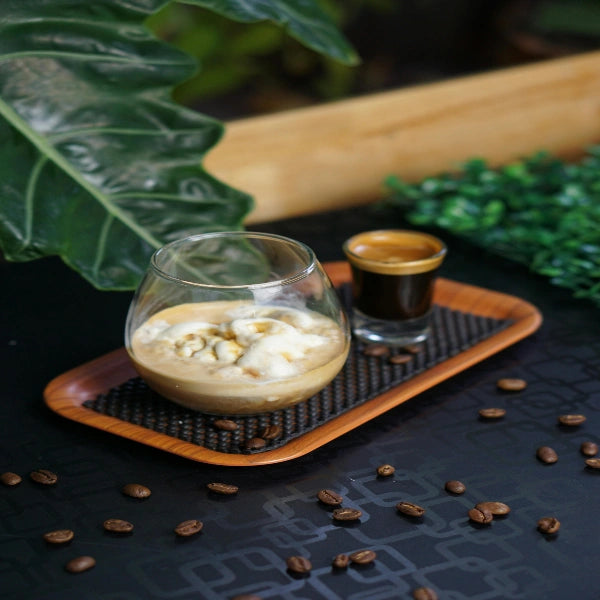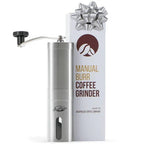Do you ever wonder what exactly is in your favorite coffee drinks like lattes and cappuccinos?
We will explore the world of heavy cream and espresso, breaking down the nutritional values, different types, and origins of these beloved ingredients.
From the Italian, French, and Spanish names for these beverages to the variations like macchiatos and mochas, we will cover it all.
Grab a cup of your favorite coffee and let's dive in!
What Is Heavy Cream and Espresso Called?
Heavy cream and espresso combined are commonly referred to as a latte in the coffee industry. A latte is a popular dairy-based beverage enjoyed by many coffee enthusiasts and lovers.
Read: Spanish Latte A Taste of Spain in Your Coffee Cup
Traditionally, to prepare a latte, a shot of espresso is first brewed and poured into a cup. Then, steamed heavy cream, with its rich and creamy texture, is added on top of the espresso. The heavy cream plays a crucial role in enhancing the latte's creaminess factor, giving it a velvety texture and providing a luxurious mouthfeel. Skilled baristas often use the combination of espresso and heavy cream to create exquisite latte art, adding a visually appealing touch to this beloved coffee drink.
What Is Heavy Cream?
Heavy cream, also known as heavy whipping cream, is a dairy product that contains a high percentage of milk fat, making it a rich and creamy ingredient often used by baristas in crafting various coffee concoctions.
Due to its high fat content, heavy cream has the ability to create a luxurious mouthfeel and add depth to the flavor profile of coffee beverages. Baristas skillfully incorporate heavy cream into drinks like lattes, cappuccinos, and specialty coffee creations to enhance their creaminess. This dairy product's richness complements the bitterness of coffee, striking a delightful balance that pleases the palate. As it is whipped or steamed, heavy cream transforms into velvety microfoam that crowns espresso drinks, elevating their visual appeal and overall experience for coffee aficionados.
What Are the Nutritional Values of Heavy Cream?
Heavy cream is a dairy product that offers a rich source of calories, fat, and creaminess when added to beverages like coffee. It contributes to the creamy texture and enhances the flavor of the final drink.
Known for its high fat content, heavy cream typically contains around 36-40% fat, which is significantly higher than other types of cream. This rich fat content is what gives heavy cream its luxurious mouthfeel and contributes to its ability to create dense foams and velvety textures in beverages. In addition to its fat content, heavy cream is also calorie-dense, providing energy for those seeking a rich and indulgent drink experience.
What Are the Different Types of Heavy Cream?
Heavy cream comes in various forms, including traditional dairy-based options and innovative dairy-free alternatives, catering to different consumer preferences and dietary restrictions.
- Traditional creamers, derived from cow's milk, are a classic choice for adding richness to dishes like soups, sauces, and desserts.
On the other hand, those seeking a cream substitute or dairy alternative may opt for plant-based options such as coconut cream, almond milk creamers, or oat milk creamers. Not only are these cream-free alternatives suitable for vegans or lactose-intolerant individuals, but they also offer a unique flavor profile and texture that can enhance a wide range of recipes.
Read: What happens if you put heavy whipping cream in coffee
What Is Espresso?
Espresso is a concentrated coffee beverage brewed by forcing a small amount of nearly boiling water through finely-ground coffee beans, resulting in a rich and intense flavor with a characteristic layer of frothy crema on top.

The process of making espresso is truly an art form that requires precision and skill. The espresso machine plays a crucial role in this process, as it applies just the right amount of pressure to extract the coffee's strong caffeine content and flavors efficiently. The key to achieving the perfect shot lies in the balance between the grind size of the coffee beans and the brewing time. When done correctly, the result is a deliciously bold and frothy concoction that coffee lovers around the world crave.
What Are the Different Types of Espresso?
Espresso comes in various types, including single shot, double shot, and specialty blends tailored to cater to different taste preferences and coffee traditions worldwide.
Single-shot espresso is characterized by its intense flavor and a concentrated essence. On the other hand, double-shot espresso offers a richer and bolder taste profile due to the increased coffee-to-water ratio. Espresso culture plays a significant role in how these variations are prepared and enjoyed, with different regions having their unique preferences and rituals when it comes to espresso creation. Many baristas take pride in crafting the perfect espresso blend to capture the essence of their local coffee culture, creating a delightful sensory experience for espresso enthusiasts.
Read: Single VS Double Espresso Shots: What's The Difference?
What Are the Nutritional Values of Espresso?
Espresso is a coffee drink loved by enthusiasts and fanatics alike, known for its robust caffeine content and intense flavor profile that appeals to those seeking a concentrated coffee experience.
Its popularity among coffee lovers is largely attributed to its high caffeine concentration, providing a quick and potent energy boost. The distinctive flavor profile of espresso, characterized by its complex and rich taste with hints of bitterness and sweetness, sets it apart from other coffee beverages.
For the avid coffee fanatic, the bold and intense nature of espresso creates a unique and satisfying drinking experience that is unmatched by milder coffee options.
What Is the Origin of Heavy Cream and Espresso Drink?
The combination of heavy cream and espresso in a drink has its origins rooted in the rich traditions of coffee culture, where the indulgent cream topping became a favorite among espresso enthusiasts seeking a luxurious coffee experience.
Over time, as coffee culture continued to evolve globally, the pairing of heavy cream with espresso witnessed variations and adaptations based on local preferences and ingredient availability.
In some regions, a dollop of whipped cream is used to crown the espresso, adding a delightful contrast in texture to the rich and bold coffee flavors. This fusion of cream and espresso has become a symbol of decadence and refinement, appealing to those who appreciate the art of coffee craftsmanship and enjoy exploring new dimensions of flavor in their espresso beverages.
Read: How to make whipped cream at home for coffee
What Are the Different Names for Heavy Cream and Espresso Drink?
The delightful combination of heavy cream and espresso is known by various names across different regions, appealing to latte lovers, espresso aficionados, and those who appreciate the creamy richness of this coffee concoction.
Some may affectionately refer to this blend as a 'creamy latte,' savoring the velvety texture that the heavy cream provides, while others may insist on the purity of an 'espresso con panna,' highlighting the bold essence of the espresso with just a touch of cream.
For individuals who want to enjoy the perfect balance of richness and caffeine kick, the 'espresso macchiato' offers a nuanced experience where creaminess meets espresso intensity in harmonious unison.
What Is the Italian Name for Heavy Cream and Espresso Drink?
In Italy, the combination of heavy cream and espresso is known as a 'Caffè Macchiato', where a dollop of cream is mixed with a shot of espresso, reflecting the country's rich espresso tradition and love for creamy coffee blends.This creamy espresso beverage holds a special place in Italian coffee culture, serving as a symbol of indulgence and tradition. The art of preparing a perfect Caffè Macchiato involves delicately layering the cream mixture on top of the bold espresso, creating a harmonious blend of flavors and textures. For Italians, enjoying a freshly made Caffè Macchiato is not just about the drink itself, but also about savoring moments of relaxation, friendship, and community around this beloved coffee ritual.
What Is the French Name for Heavy Cream and Espresso Drink?
In France, the fusion of heavy cream and espresso is known as 'Café Viennois', where the consistency of the cream and the ritual of espresso preparation come together to create a harmonious coffee experience that resonates with French coffee traditions.
The cream consistency in a Café Viennois is crucial as it not only adds a velvety texture but also balances the intense flavor of the espresso. French coffee culture places a high value on the espresso ritual, with each step meticulously executed to ensure a perfect extraction. The combination of creamy richness and bold espresso flavors in a Café Viennois embodies the essence of indulgence and sophistication that defines the French approach to coffee.
What Is the Spanish Name for Heavy Cream and Espresso Drink?
In Spain, the delightful combination of heavy cream and espresso is referred to as 'Bombón', a coffee drink where a sweetened cream addition complements the bold flavors of espresso, elevating the coffee preparation process to create a harmonious blend of tastes.
The art of preparing a perfect 'Bombón' involves a precise balance of espresso, traditionally strong and aromatic, with the velvety richness of heavy cream. The key lies in carefully layering the two components, allowing the cream to mingle with the dark, intense espresso. This meticulous process results in a decadent coffee experience that is not just about taste but also about visual appeal. The addition of cream imparts a luxurious mouthfeel and enhances the overall sweetness of the beverage, making it a favorite among coffee connoisseurs in Spain.
What Are the Variations of Heavy Cream and Espresso Drink?

The variations of heavy cream and espresso drinks encompass a wide range of options, from the frothy richness of a cappuccino to the nuanced creaminess levels found in specialty beverages that cater to diverse preferences within the coffee industry.
These creaminess levels play a crucial role in determining the overall taste and texture of espresso-based drinks. Cappuccinos, for instance, are characterized by a balanced combination of espresso, steamed milk, and frothed milk, resulting in a velvety mouthfeel and a creamy finish.
In contrast, newer trends in the coffee industry have seen the emergence of ultra-creamy concoctions like nitro cold brews and whipped cream-topped lattes, showcasing a shift towards indulgent and luxurious coffee experiences.
What Is the Difference Between a Latte and a Cappuccino?
The key difference between a latte and a cappuccino lies in the creaminess factor and the ratio of espresso to steamed milk. While a latte tends to be creamier with more milk, a cappuccino features a higher espresso content and a frothier texture, appealing to varying preferences among coffee enthusiasts.
The distinction between these two popular coffee drinks extends beyond just their milk and espresso ratios. The type of coffee beans used also plays a crucial role in determining the flavor profile of a latte or a cappuccino. For lattes, a smoother blend of coffee beans is often preferred to enhance the creamy texture of the drink. On the other hand, cappuccinos tend to be paired with stronger, more robust coffee beans to maintain a balanced flavor profile that complements the frothy milk and rich espresso. Achieving the perfect balance of espresso crema and frothed milk is an art that baristas master to create the ideal latte or cappuccino for discerning coffee connoisseurs.
Read: The Creamy Trio Latte vs Cappuccino vs Macchiato Compared
What Is the Difference Between a Macchiato and a Mocha?
The distinction between a macchiato and a mocha lies in the cream ratio and the aromatic profile. A macchiato features a high espresso-to-milk ratio with a dollop of foam, while a mocha combines espresso with chocolate and steamed milk, creating a rich and aromatic coffee experience that appeals to different sensory preferences.
In terms of flavor profiles, a macchiato tends to highlight the bold richness of espresso, often with a slight touch of sweetness from the milk.
On the other hand, a mocha boasts a more indulgent taste due to the addition of chocolate, offering a harmonious blend of bitter coffee notes with the decadent sweetness of cocoa.
The coffee aroma of a macchiato is distinctively espresso-forward, while a mocha's aroma is enhanced by the delightful fusion of coffee and chocolate scents, enticing coffee lovers with its decadent allure.


